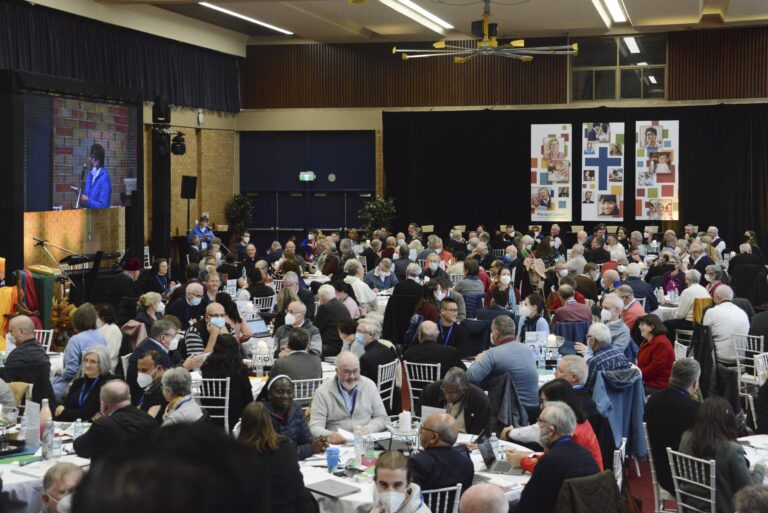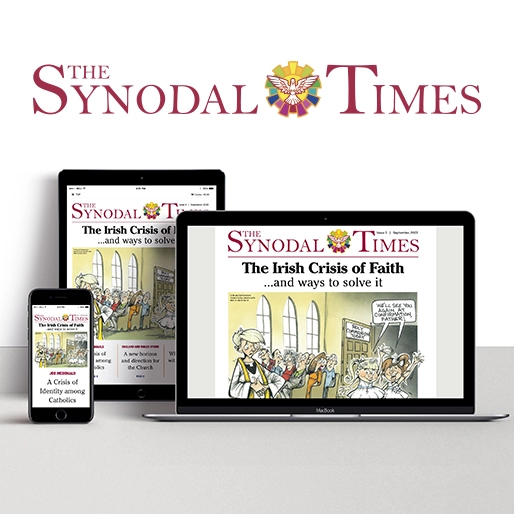My hopes for the Synod lie with the leadership of Pope Francis. When the Pope launched World Youth Day in Lisbon recently, he emphasised once again his great theme of openness, repeating the Spanish term “todos”, meaning “everyone” and urging his audience to do so too.
He said: “There is room for everyone in the Church, and whenever there is not, then, please, we must make room, including for those who make mistakes, who fall or struggle. The Lord does not point a finger, but opens wide his arms”. Just what this means in practice, though, is central to any discussion of the Synod.
Opinions within a disunited and polarised Church vary enormously. The Pope himself referred in his address to the framework of Church laws within which openness must operate. Christopher White, writing in the National Catholic Reporter on August 6 2023, interpreted the Pope’s meaning to be: “A message of welcome to historically marginalised groups in the Church, including women, the divorced and remarried, and LGBTQ Catholics”. I hope that is the case.
Questions remain though to be discussed at the Synod. How much diversity is the Church willing to accommodate? How much divergence from traditional status differentials, governance structures and established Church teaching is possible?
There are different types of diversity, and all are important. What I call ‘soft’ diversity, meaning ethnic diversity, co-existence of various Rites and even some decentralisation and regional diversity,. can be accommodated. It may even be welcomed enthusiastically by Synod members.
However, what I call ‘hard’ diversity, meaning evolution in Church teaching, inclusion of women, divorced and remarried, and LGBTQIA+ Catholics (Christopher White’s ‘marginalised groups’), is much more challenging and less likely in the immediate term. Yet it should be our aspiration as a Church.
Hopes and Fears for the Synod
The Synod on Synodality is a true advance and an opportunity for the Church to move forward. There is a lot to like about the direction the Synod has taken. Many elements of it, including the Working Document, make me cautiously optimistic.
I like the language of the document. I welcome its engaging approach and I appreciate its apparent openness to reform on contested issues. I don’t have any major worries about the Document, therefore, though it is just a preliminary document for the first of two assemblies, and it is not yet strong enough on equal rights for women.
My worries are not really about the composition of the voting members either, which Pope Francis has made more diverse than ever before; though it is still hierarchical rather than representative of the whole Church.
The Australian participants, for instance, don’t include a truly alternative voice among them. That is a missed opportunity by our Church to be fully synodal. However, it is heart-warming to see more than 50 women voting members and other lay members as well as clerical members chosen by the Pope.
My worries lie rather broadly with what I know about the Church’s record and what I hear some powerful conservative figures saying about the Synod. First, what we know of opinion within the universal Church must make any reasonable reformer concerned.
I especially fear the malign influence of conservative Americans, both bishops and the broader conservative American Church community. They make no secret that they don’t like either Francis or the Synod and, well-funded and vocal, they will do all they can to impede any progress. Their influence is widespread.
Secondly, I fear the obvious unwillingness of a significant minority, at least, of bishops around the world to embrace synodality and Pope Francis’ vision. Official Australian responses to the late Cardinal Pell’s parting tirade late last year against both the Pope and the Synod was some local evidence of this. Not one Australian Church leader strongly supported Francis by distancing themselves from Pell’s denunciations, though a couple hedged their bets.
This reluctance may have come about for various reasons such as not speaking ill of the dead, but one reason clearly was that at least some bishops agreed with Pell.
Evidence for this conclusion came later in the Oceania Bishops’ Pastoral Reflection following the preparation of the Oceania Response to the Continental phase document. Ominously it noted that: “Not every bishop found every part of the document wholly convincing or complete, and some had doubts and concerns about where this might be leading us”.
Expectations
This typically vague language was a sort of ‘minority report’, which, along with warnings from many bishops about unrealistic expectations and how long the journey would be, served only to deflate the aspirations of their own communities. Thirdly, the dilatory take up by Australian bishops of the outcomes of the local Plenary Council is another warning to the faithful not to expect too much.
In their official document issued at Pentecost 2023 called “Carrying Forward the Plenary Council” no attempt was made by the Australian Catholic Bishops Conference to give an update on diocesan implementation. This was a missed opportunity. The Australian Catholic community has been left without leadership.
But what we do know, based on the research efforts of the editorial committee of the “Sense of the Faithful” group in Melbourne is that the take up has been disappointing. Only less than one-third of Australian dioceses, and few archdioceses, have exhibited any real enthusiasm.
The Sense of the Faithful committee conclude, after studying key actions in relation to three important issues, Indigenous recognition, diocesan pastoral councils and Laudato Si action plans, that there is a “large gap between higher level intention and action on the ground”.
It is not unreasonable to fear the same push back whatever the outcomes in 2024 of the Synod on Synodality? So much in the Church depends on the attitudes of diocesan bishops. This means that the future of the Church often looks like a patchwork quilt. In other words, it is sure to be patchy.
That is why my hopes are mixed with anxiety.
John Warhurst is Emeritus Professor of Political Science at the Australian National University in Canberra. He was a member of the Australian Plenary Council. This article is based on a talk given to Catalyst for Renewal in Sydney on 27 August 2023.



